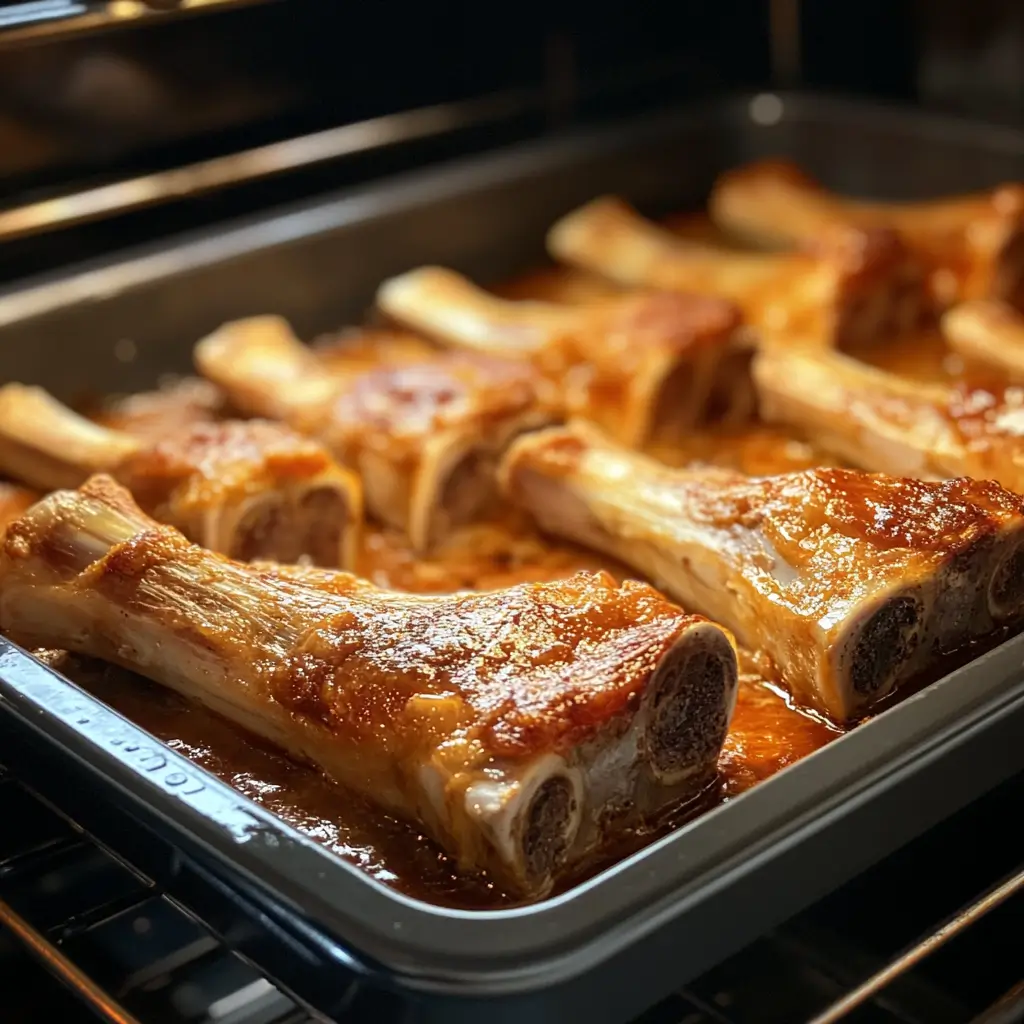Soup bones are one of the most powerful yet underrated ingredients in home cooking. They can transform a simple pot of water into a rich, deeply flavored broth packed with nutrients. Whether you’re making a cozy homemade soup, a robust stock for future recipes, or a collagen-boosting bone broth, knowing how to use soup bones properly will elevate your cooking to the next level.
But how do you unlock their full potential? Should you roast them first? How long should you simmer them? Are all soup bones the same? This comprehensive guide answers all these questions and more, ensuring that every batch of broth you make is delicious, nutritious, and bursting with flavor.
Table of Contents
What Are Soup Bones and How Are They Used?
Defining Soup Bones
Soup bones are the leftover bones from meat processing, commonly sold with some connective tissue, marrow, and bits of meat still attached. Unlike boneless cuts of meat, these bones contain natural collagen, gelatin, and minerals that slowly release into the liquid as they cook, resulting in a nutrient-dense broth with a rich, velvety texture.
Types of Soup Bones
Each type of bone has its own distinct characteristics and is suited for different types of broths and soups:
- Beef Soup Bones – These are typically large, dense bones rich in marrow. They produce a deep, full-bodied broth with a slightly sweet, umami-rich flavor.
- Chicken Bones – Smaller and lighter, chicken bones create a more delicate broth that’s excellent for light soups and healing remedies.
- Pork Bones – Slightly fattier than beef bones, pork bones produce a silky, rich broth commonly used in Asian soups like tonkotsu ramen.
- Fish Bones – High in natural umami, fish bones are great for making quick, flavorful stocks that pair well with seafood dishes.
How Soup Bones Enhance Flavor and Nutrition
Soup bones contribute more than just taste. They provide:
- Collagen and Gelatin – Essential for joint and skin health.
- Minerals (Calcium, Magnesium, and Phosphorus) – Beneficial for bone strength.
- Amino Acids (Glycine and Proline) – Aid digestion and gut health.
When slow-simmered, these nutrients are released into the broth, making it not only flavorful but also incredibly good for your body.

Should You Roast Soup Bones Before Using Them?
Why Roasting Matters
Roasting soup bones before simmering them can significantly enhance the depth of flavor in your broth. The dry heat of the oven caramelizes the natural sugars in the bones, creating a richer and more complex taste.
Benefits of Roasting Soup Bones
- Intensifies the Umami Flavor – Caramelization deepens the broth’s taste.
- Gives the Broth a Deeper Color – A dark, golden broth is more visually appealing.
- Reduces Impurities – Roasting helps eliminate excess blood and fats, creating a cleaner broth.
How to Roast Soup Bones for Maximum Flavor
To achieve the best results, follow these steps:
- Preheat the Oven – Set it to 400°F (200°C).
- Prepare the Bones – Arrange them in a single layer on a baking sheet.
- Roast for 30-40 Minutes – Turn them halfway through for even browning.
- Transfer to a Pot – Once golden-brown, move the bones directly into your stockpot or slow cooker.
If you’re short on time, you can skip this step. However, if you want the absolute best flavor, roasting is highly recommended.
How Long Should You Boil Bones for Soup?
Why Simmering Time Matters
The length of time you simmer soup bones directly impacts the quality of your broth. A slow, steady simmer allows collagen, marrow, and minerals to break down and infuse into the liquid without clouding the broth.
Optimal Cooking Times by Bone Type
| Bone Type | Minimum Cooking Time | Ideal Cooking Time |
|---|---|---|
| Beef Bones | 12 hours | 24-48 hours |
| Chicken Bones | 4 hours | 12-24 hours |
| Pork Bones | 6 hours | 12-24 hours |
| Fish Bones | 30 minutes | 2 hours |
Key Tips for Perfect Broth
- Use Cold Water to Start – This helps extract more nutrients gradually.
- Simmer, Don’t Boil – A rolling boil can break down collagen too quickly, resulting in a cloudy broth.
- Add Vinegar – A small amount of apple cider vinegar helps release minerals from the bones.
- Skim the Foam – Remove any scum or impurities that rise to the surface for a clear broth.
What’s the Difference Between Soup Bones and Bone Broth?
Although they are closely related, soup bones and bone broth serve different purposes in cooking.
Key Differences
| Feature | Soup Bones | Bone Broth |
|---|---|---|
| Definition | Raw bones used to make stock or soup. | A finished liquid extracted from bones. |
| Cooking Time | Used in stocks or soups (4-24 hours). | Simmered for extended periods (12-48 hours). |
| Gelatin Content | Varies depending on the type of bone used. | Higher due to long cooking time. |
| Usage | Used in soups, stews, and stocks. | Consumed as a standalone health drink or base for soups. |
When to Use Each One
- For soups and stews – Use soup bones to create a versatile stock.
- For health benefits – Opt for bone broth due to its high collagen content.
How to Eat Soup Bones and Extract Maximum Flavor
While most people discard the bones after making broth, there are ways to enjoy the rich nutrients inside them.
Eating the Marrow
- Scoop It Out – After roasting, use a small spoon to extract the marrow.
- Spread on Toast – A delicious way to enjoy marrow with a sprinkle of sea salt.
- Blend Into Soup – Add marrow to hot broth for an extra boost of flavor and nutrition.
Reusing Soup Bones
- Second Batch of Broth – Many bones can be reused for a lighter, secondary broth.
- Pet Treats – Some roasted bones can be safely given to dogs, but avoid brittle bones.

Recipe: Classic Homemade Soup Bone Broth
Ingredients
| Ingredient | Amount | Notes |
|---|---|---|
| Soup bones | 2 lbs | Beef, chicken, or pork |
| Water | 12 cups | Adjust based on pot size |
| Vinegar | 2 tbsp | Helps extract nutrients from bones |
| Onion | 1 large | Quartered for flavor |
| Garlic | 4 cloves | Crushed for aroma |
Instructions
- Roast the Bones (Optional) – Preheat the oven to 400°F and roast for 30-40 minutes.
- Combine Ingredients – Place bones and vegetables in a large stockpot.
- Add Water and Vinegar – Cover bones completely.
- Simmer for 12-24 Hours – Maintain a gentle simmer and skim impurities.
Common Mistakes to Avoid When Cooking with Soup Bones
Cooking with soup bones seems straightforward, yet several common mistakes can result in a broth that’s bland, greasy, or cloudy. By addressing these issues, you can ensure that your homemade broth is rich, flavorful, and visually appealing.
1. Boiling Instead of Simmering
A rolling boil may seem like the fastest way to extract flavors, but it actually disrupts the collagen extraction process and results in a murky broth. Instead, maintain a low and steady simmer at around 190-200°F (88-93°C). This slow process helps break down collagen and gelatin while keeping the broth clear.
2. Not Roasting the Bones First
Although some recipes skip this step, roasting enhances the depth of flavor. Caramelizing the bones at 400°F (200°C) for 30-40 minutes unlocks a nutty, smoky undertone that elevates the final broth. Without roasting, your broth might lack complexity.
3. Forgetting to Skim the Foam
As soup bones cook, impurities and excess proteins rise to the surface. If you fail to skim off the foam, it can lead to a cloudy, bitter broth. Using a fine-mesh strainer or ladle, skim the broth every 30-60 minutes during simmering.
4. Using Too Much or Too Little Water
The correct water ratio is critical. Using too much water leads to a diluted, weak broth, while too little can result in overly concentrated, overpowering flavors. Aim to keep the water level about 2 inches above the bones and replenish as needed.
5. Skipping the Vinegar for Nutrient Extraction
A small amount of acid—such as apple cider vinegar or lemon juice—helps draw minerals like calcium, magnesium, and phosphorus from the bones. Add 1-2 tablespoons per gallon of water and let the mixture sit for 20-30 minutes before cooking for best results.
6. Discarding the Bones After One Use
Did you know you can reuse soup bones? While the first batch of broth is the most concentrated, a second simmer can still yield a milder, yet nutritious broth. Simply add fresh aromatics and simmer the bones for another 6-12 hours to extract any remaining nutrients.
Pro Tips & Variations
1. Boosting Umami with Extra Ingredients
To enhance the natural umami of your broth, consider adding:
- Miso paste – Deepens the savory taste.
- Dried mushrooms – Intensifies the earthy umami flavor.
- Parmesan rinds – Adds a nutty complexity.
2. Infusing Additional Aromatics
While traditional broths rely on onion, celery, and garlic, you can experiment with:
- Ginger & lemongrass – Perfect for Asian broths.
- Star anise & cinnamon – Essential for pho-style broths.
- Turmeric & black pepper – Adds anti-inflammatory benefits.
3. Storing & Freezing Broth for Later Use
Homemade broth lasts 5-7 days in the fridge but can be frozen for up to 6 months. To freeze:
- Use ice cube trays for small portions.
- Store in glass jars (leave space for expansion).
- Vacuum seal in freezer bags for space-saving storage.
4. Creative Uses for Leftover Broth
Instead of just making soup, try using broth in:
- Risottos – Enhances creaminess.
- Mashed potatoes – Adds depth without extra dairy.
- Pasta sauces – Infuses flavor into simple tomato sauces.
- Cooking grains – Use instead of water for extra taste.
FAQs
Below are answers to the most frequently asked questions about soup bones, broth preparation, and usage.
What Do You Use Soup Bones For?
Soup bones are primarily used to make broth, stock, and soups. However, they can also enhance:
Sauces and gravies – Adds depth and richness.
Stews and braised dishes – Provides a robust, savory backbone.
Marrow-based dishes – Bone marrow can be scooped and spread on toast.
Should I Roast Soup Bones First?
Yes! Roasting intensifies the flavor and gives the broth a richer color. Simply place the bones on a baking sheet and roast at 400°F (200°C) for 30-40 minutes before adding them to your pot.
Are Soup Bones Healthy?
Absolutely! Soup bones provide:
Collagen & gelatin – Supports joint and skin health.
Minerals (calcium, phosphorus, magnesium) – Essential for bone strength.
Amino acids (glycine, glutamine) – Aid digestion and gut health.
Can You Reuse Soup Bones?
Yes! While the second batch will be lighter, it is still useful for soups or cooking grains. Simply add fresh water and aromatics and simmer the bones again for 6-12 hours.
How Do You Eat Soup Bones?
After simmering, you can:
Scoop the marrow directly from the bone and enjoy it on toast.
Blend it into soups for added richness.
Use the softened bones to create pet treats (ensure no splintering).
Conclusion
Soup bones are a powerhouse ingredient for creating rich, flavorful, and nutrient-dense broths. With the right techniques—such as roasting, simmering correctly, and infusing aromatics—you can craft restaurant-quality broth at home. Whether you’re making a beef stock, chicken bone broth, or a complex ramen base, mastering the art of cooking with soup bones will elevate your culinary skills and improve your health.
Now, it’s time to experiment with flavors and make your own homemade broth!
Print
Soup Bones: How to Use, Prepare, and Get the Best Flavor
- Total Time: 12-48 hours
- Yield: About 8-10 cups of broth
Description
This classic homemade soup bone broth is a nutrient-dense, collagen-rich base perfect for soups, stews, and sipping on its own. Made from slow-simmered bones, aromatic vegetables, and a touch of vinegar, this broth is packed with deep flavor and essential nutrients for gut health, joint support, and overall well-being.
Ingredients
- 2 lbs soup bones (beef, chicken, or pork)
- 12 cups water (adjust based on pot size)
- 2 tbsp apple cider vinegar (helps extract nutrients from bones)
- 1 large onion (quartered)
- 4 cloves garlic (crushed)
- 2 carrots (chopped)
- 2 celery stalks (chopped)
- 1 bay leaf (optional, for extra flavor)
- 1 tsp black peppercorns (optional)
- 1 tsp salt (adjust to taste)
- Fresh herbs (thyme, parsley, or rosemary) (optional, for depth of flavor)
Instructions
- Roast the Bones (Optional but Recommended):
- Preheat oven to 400°F (200°C).
- Arrange soup bones on a baking sheet and roast for 30-40 minutes, flipping halfway.
- This enhances the depth of flavor and results in a richer broth.
- Prepare the Broth:
- In a large stockpot or slow cooker, add the roasted bones, chopped vegetables, garlic, and herbs.
- Pour in 12 cups of cold water, ensuring the bones are fully submerged.
- Add apple cider vinegar and let it sit for 20-30 minutes before heating. This helps extract minerals from the bones.
- Simmer Gently:
- Bring the pot to a gentle simmer over low heat (avoid boiling, as it can make the broth cloudy).
- Skim off any foam or impurities that rise to the surface during the first hour of cooking.
- Cook Time:
- Beef bones: Simmer for 12-48 hours.
- Chicken bones: Simmer for 4-24 hours.
- Pork bones: Simmer for 6-24 hours.
- Fish bones: Simmer for 30 minutes to 2 hours.
- Strain & Store:
- Once the broth is done simmering, remove the bones and strain the liquid through a fine-mesh sieve or cheesecloth.
- Let it cool before transferring to jars or containers.
- Store in the refrigerator for 5-7 days or freeze for up to 6 months.
Notes
- For a richer flavor, add aromatics like ginger, lemongrass, turmeric, or star anise.
- To remove excess fat, refrigerate the broth and skim off the solidified fat from the top before reheating.
- Best ways to enjoy: Sip warm, use as a soup base, cook grains with it, or mix into sauces for added depth.
- For extra gut-healing benefits, stir in a teaspoon of miso paste or a splash of coconut milk before serving.
- Prep Time: 10 minutes
- Cook Time: 12-48 hours
- Category: Dinner
- Cuisine: Global
Nutrition
- Calories: 50-80
- Fat: 2-5g
- Carbohydrates: 2g
- Protein: 5-8g

2 thoughts on “Soup Bones: How to Use, Prepare, and Get the Best Flavor”